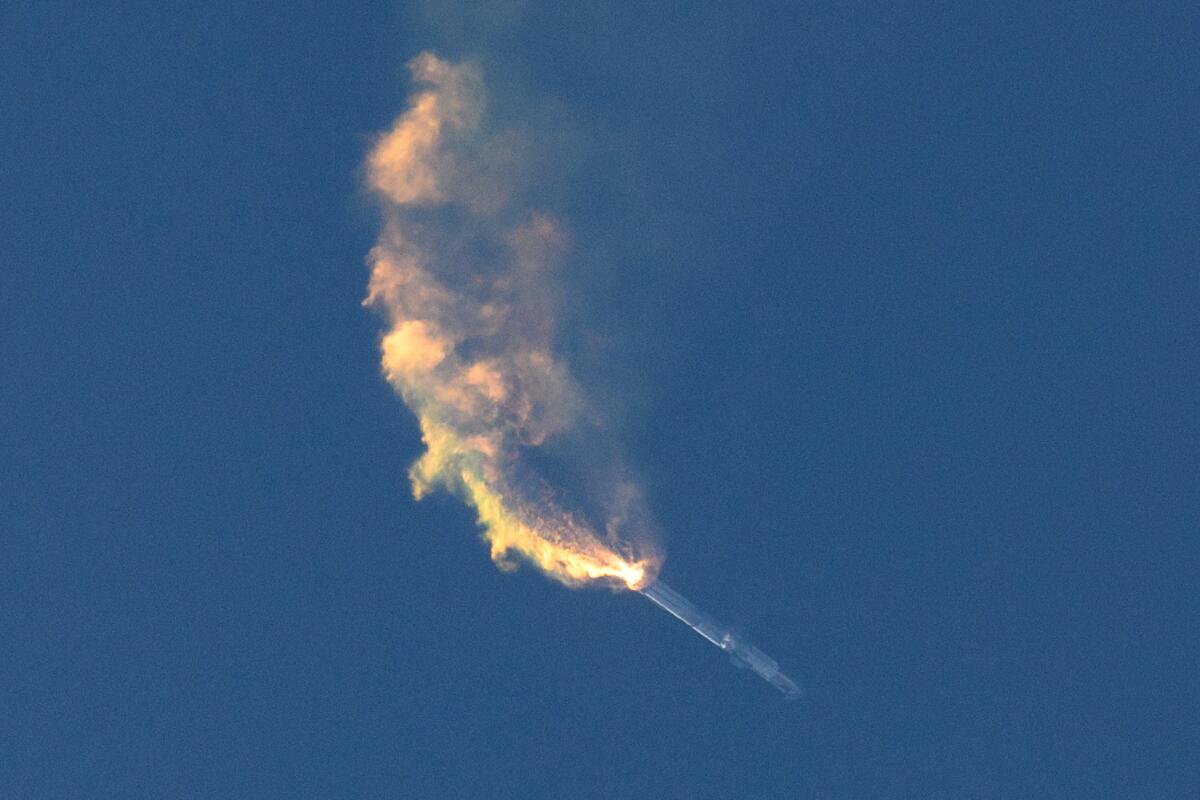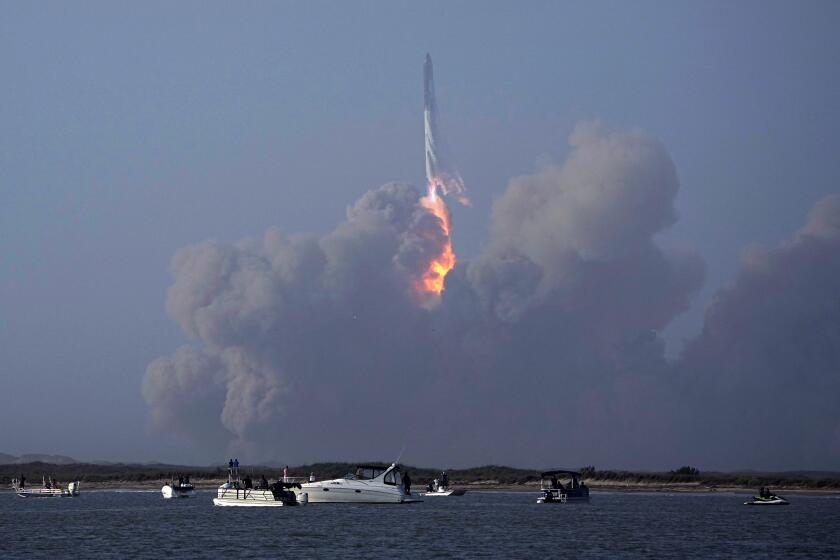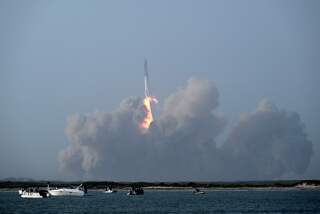How destructive was that SpaceX Starship liftoff? It blasted concrete up to 6.5 miles away

SpaceX’s explosive test flight of its Starship rocket last week hurled “pulverized concrete” up to 6½ miles northwest of the South Texas launch pad and resulted in about 385 acres of debris on SpaceX’s facility and at nearby Boca Chica State Park, according to the U.S. Fish and Wildlife Service.
The agency said many large concrete chunks, stainless-steel sheets, metal and other objects were “hurled thousands of feet away,” along with a plume of concrete particles that resulted in the miles-away scattering. A 3½-acre fire also started on Boca Chica State Park, south of the launch pad, the agency said.
The U.S. Fish and Wildlife Service was assessing the effects of the launch because SpaceX’s launch site is near the agency’s Lower Rio Grande Valley National Wildlife Refuge and Boca Chica State Park, which is leased by Fish and Wildlife and managed as part of the Lower Rio Grande Valley refuge.
Agency staff were not allowed to go onto refuge-owned or managed lands until two days after the launch because of “launch pad safety concerns.” Fish and Wildlife said it hadn’t found any dead birds or wildlife on any of those lands.
SpaceX did not immediately respond to a request for comment on the agency’s assessment.
Fish and Wildlife said it was in communication with SpaceX and other agencies to “provide on-the-ground guidance to minimize further impacts and reduce long-term damages to natural resources.” The agency is also coordinating with the Federal Aviation Administration on its assessment of the site, recommendations and whether SpaceX is complying with the Endangered Species Act.
The FAA is leading a separate mishap investigation of the test launch, which ended with the rocket exploding minutes into the mission, and said last week that it would not allow Starship to fly again until it determined that any system or procedure related to the mishap did not affect public safety.
On Wednesday, the FAA said the launch debris spread means SpaceX will be required to have “ongoing monitoring of vegetation and wildlife by a qualified biologist,” including a pre- and post-launch survey, and sending a report to the FAA and other state or federal agencies. SpaceX must also work with local and federal authorities to remove launch debris from “sensitive habitats.”
The FAA said it will ensure the company complies with all these requirements.
This was the first launch attempt of the company’s massive Starship moon rocket, which is crucial for the future of both SpaceX and U.S. plans for human space exploration.
Last week’s Starship launch was the first time SpaceX had launched its massive rocket, which has 33 engines in its Super Heavy first-stage booster. The rocket cleared the launch tower and soared into the sky for a few minutes before somersaulting and exploding in midair.
The Hawthorne space company later said the explosion was triggered by the rocket’s autonomous flight termination system, a safety measure embedded in the rocket’s software that destroys the launch vehicle if it senses that its course or performance is awry or unsafe. SpaceX said multiple rocket engines were out during the flight and that Starship lost altitude.
Despite the explosive ending, the company called the test flight a “win” because its publicly stated goal was to lift off and clear the launch pad. SpaceX develops its rockets through an iterative process and tests often to improve design and engineering. Company representatives said on last week’s launch webcast that there are already several new Starship rockets in the testing queue.
SpaceX’s Texas launch site does not have a cavernous flame trench, intended to divert energy away from a rocket’s base, typical of more established, government-run launch pads at Cape Canaveral in Florida or Vandenberg Space Force Base near Lompoc, Calif. Launch watchers noticed last week that the SpaceX pad sustained what seemed to be substantial damage after liftoff.
Fish and Wildlife had previously been concerned how long SpaceX had been closing public roads in Boca Chica for testing, alleging that the company had exceeded its assigned hours, according to “60 Minutes.” An agency employee said in a letter to SpaceX obtained by “60 Minutes” that SpaceX workers were parking on refuge lands.
In addition to the debris documented by Fish and Wildlife, local residents reported broken windows and shaking homes in nearby Port Isabel, Texas, after the launch. Cars equipped to livestream the launch that were parked close to the launch site got pummeled by the force of the launch, and one was hit by bowling ball-size concrete chunks.
There were also reports of black particulate matter and dust, including one case in which a car was dusted with black sand-like particles, Dave Cortez, director of the Sierra Club Lone Star chapter, said last week. The group has campaigned with other local organizations to amplify residents’ concerns about the effects of SpaceX launches on the nearby community.
The effects of the launch were surprising, even for Eric Roesch, an environmental compliance specialist who has followed SpaceX’s south Texas site development for nearly two years and raised concerns in his ESG Hound Substack about the potential effects of launching such a large rocket on a concrete slab.
“The specific manner of the debris field that was created, it certainly was above what even I imagined,” he said. “It’s illustrative of the whole process being inadequate for disclosing risks. And disclosing risks is the important part of this process.”
More to Read
Inside the business of entertainment
The Wide Shot brings you news, analysis and insights on everything from streaming wars to production — and what it all means for the future.
You may occasionally receive promotional content from the Los Angeles Times.












